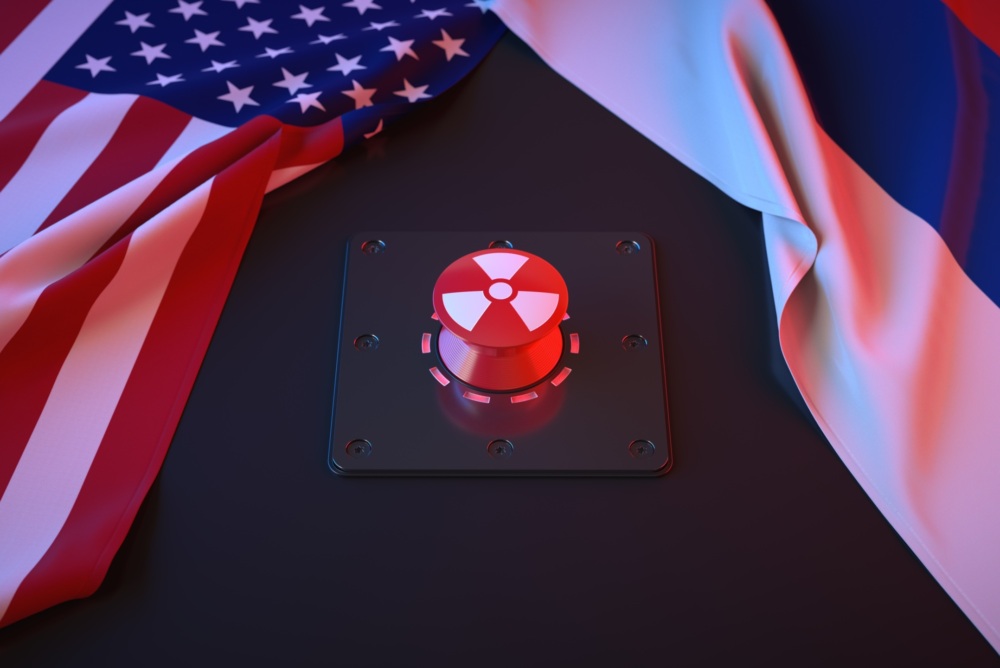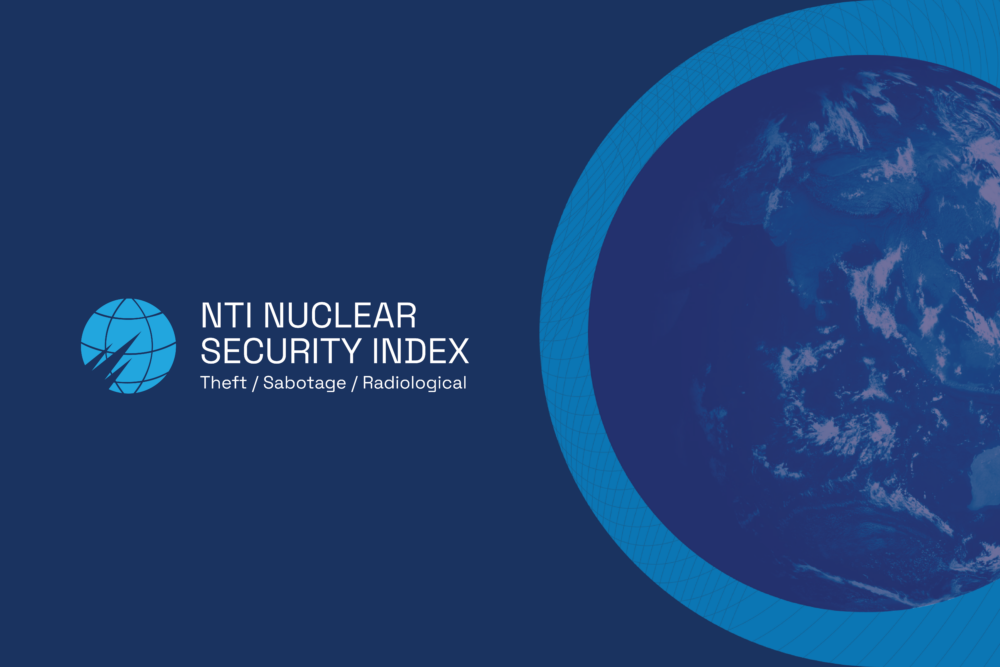
Jeffrey Lewis
Director of the East Asia Nonproliferation Program, The James Martin Center for Nonproliferation Studies
It is, perhaps, the darkest moment in Stanley Kubrick’s film, Dr. Strangelove, or How I Learned to Stop Worrying and Love the Bomb. Having failed to stop an American bomber that will inevitably trigger the Soviet doomsday machine, the men in the war room discuss waiting out the holocaust in the comfort of underground bunkers, deep in Mineshafts.
Their mood changes as one of them, General Turgidson, warns that Soviet leaders are almost certainly retreating to mineshafts of their own at this very moment, mineshafts from which they may later emerge with superior numbers to dominate the United States.
“Mr. President,” he bellows, “we must not allow a MINESHAFT GAP!”
Having destroyed the world, they have learned nothing. Sadly, neither have we.
For while the mineshafts at the end of Dr. Strangelove seem like dystopian science fiction from the Cold War, both the United States and Russia spend a great fortune every year to maintain and improve an extensive complex of underground sites that will allow official Washington and Moscow to survive a nuclear war – sites that are designed to maintain the continuity of government, even while the people that government purports to represent perish.
Because of the fear of a surprise nuclear attack, a threat only realistically posed by Russia and the United States to each other, both countries maintain large numbers of nuclear weapons on high rates of alert. In the United States, this policy is called "Launch Under Attack," the option to fire U.S. nuclear-armed ICBMs after Russian missiles have been launched, but before they destroy targets in the United States about thirty minutes later.
This policy offers the U.S. President only a few minutes to decide whether to use nuclear weapons, a decision that would probably be made while President Trump was being whisked away to one of these many underground nuclear bunkers, from which he could continue to fight the nuclear war. In Russia, President Vladimir Putin would likely take an underground VIP subway to one of the bunkers in or around Moscow.
Nothing better illustrates the continuing absurdity of plans to fight a nuclear war than the massive complex of underground bunkers that the United States and Russia have built to survive and fight on even after both societies have collapsed. To help explain the scale of these facilities, we have reconstructed two, Site R in rural Pennsylvania (also known as Raven Rock) and the Kosvinsky underground command facility in Russia, roughly to scale using the popular immersive gaming platform Minecraft. (You may explore these sites through annotated guided tours, embedded later in this article, or at your own pace in the computer, Nintendo, or Xbox versions of the game, Minecraft. The former is free, while the latter requires a Minecraft account – instructions to explore both sites in the game are available.
The plans – known in the United States as “continuity of government” – are to create a kind of zombie government that fights on to protect people who are long-dead. In the United States, the Executive Branch had a discussion about whether to include Congress, but “it was decided that no, it would be easier to operate without them.” [1] Congress, of course, felt differently. Not to be left out, it funded its own bunker underneath the Greenbrier resort, in Pennsylvania.
Many of these sites are well-known, despite official secrecy.
Explore by pressing the play button bellow and using the bottom arrows to view the annotations.
Please note the model may take a moment to load.
Russia, too, has its own network of deep underground sites. In 2016, there were reports of Russia modernizing and expanding dozens of these sites.
Explore by pressing the play button bellow and using the bottom arrows to view the annotations.
Please note the model may take a moment to load.
In 1978, Russia began constructing another massive underground complex under Yamantau Mountain. [10] The facility created enormous controversy during the 1990s when construction appeared to resume. At the time, General Eugene Habiger, then Commander of U.S. Strategic Command, called it “a very large complex—we estimate that it has millions of square feet available for underground facilities. We don’t have a clue as to what they’re doing there.” The site today appears to be abandoned. [11]
The United States and Russian Federation are spending billions of dollars to maintain these facilities, and they are enormous in size. Each site has miles of tunnels under hundreds of feet of earth and rock. They have room for thousands of officials. A leaked DIA report about Russia’s growing emphasis on nuclear bunkers reportedly states that the two bunkers under Moscow alone could accommodate 10,000 people. [12] The same report asserts, “Highly effective life-support systems may permit independent operations for many months following a nuclear attack.” [13] These include power plants, water reservoirs and air filters to allow the occupants to continue their duties while Americans and Russians aboveground die in massive and excruciating numbers. Still, the statistics do not begin to convey the enormity of this enterprise.
Of course these sites remain among the most secretive elements of U.S. and Russian plans to fight a nuclear war. No images from inside either facility are available to the public. In many cases, we had to imagine what the inside of these facilities might look like, although we were inspired by images from other U.S. and Soviet bunkers that are now public. [14]
Why should they be so secret? After all, the locations of these facilities are known to the U.S. public, and to the Russians, Chinese and North Koreans. The case of Greenbrier is illustrative – when the existence and extent of the Congressional bunker at Greenbrier was disclosed by the Washington Post in 1992, there was immediate public pressure to close it. [15] When Congress authorized construction of a new bunker after 9/11, it worked hard to keep the site out of the press.
The real reason for secrecy is not national security, but rather to avoid public scrutiny—scrutiny not just about the enormous cost of the complexes, but of the continuing danger posed by launch under attack and other Cold War nuclear relics. Nuclear deterrence does not require that the government outlive the people it purports to represent or any other notion of “prevailing” in a nuclear war. Nuclear deterrence merely requires that both sides understand that any nuclear war would be unthinkably catastrophic. This is obvious, even without nuclear weapons on high alert or underground mountain complexes.
Ronald Reagan famously observed that “a nuclear war cannot be won and must never be fought.” But as you stroll through our virtual Raven Rock and Kosvinsky bunkers, you may notice that Washington and Moscow are spending a fortune to do just that.
Sources:
[1] James Mann, “The Armageddon Plan,” The Atlantic, March 2004, www.theatlantic.com.
[2] Garrett M. Graff, Raven Rock the Story of the U.S. Government’s Secret Plan to Save Itself-While the Rest of Us Die, Simon & Schuster, 2017.
[3] William M. Arkin, Robert Windrem, “Secrets of 9/11: New Details of Chaos, Nukes Emerge,” NBC News, 11 September 2016, www.nbcnews.com.
[4] Rowan Scarborough, “Congress has new shelter in case of attack, The Washington Times, 23 April 2013, www.washingtontimes.com.
[5] “Raytheon Receives $700 Million Cheyenne Mountain Contract,” Signal, 2 April 2015, www.afcea.org.
[6] Military Forces In Transition, Chapter 3, Moscow’s Deep-Underground Facilities, 1991, nsaarchive2.gwu.edu.
[7] Military Forces In Transition, Chapter 3, Moscow’s Deep-Underground Facilities, 1991, nsaarchive2.gwu.edu.
[8] Hardened Central-Command Associated Facilities Near Moscow, Photographic Interpretation Report, National Photographic Interpretation Center, April 1971, www.cia.gov.
[9] Bill Gertz, “Betrayal,” 1999, cryptome.org.
[10] Michael R. Gordon, “Despite Cold War’s End, Russia Keeps Building a Secret Complex, The New York Times, 16 April 1996, www.nytimes.com.
[11] Greg Caires, “Exclusive Interview with General Eugene Habiger of STRATCOM,” Defense Daily, 4 March 1998. Available at: https://web.archive.org/web/19981202052013/https://defensedaily.com:80/reports/habiger.htm
[12] “1991 Military Forces in Transition,” U.S. Department of Defense, September 1991, edocs.nps.edu.
[13] “1991 Military Forces in Transition,” U.S. Department of Defense, September 1991, edocs.nps.edu.
[14] For example, see the several pages of full color images in Graff, Raven Rock.
[15] Ted Gup, “The Ultimate congressional Hideaway,” The Washington Post, 31 May 1992, www.washingtonpost.com.
Sign up for our newsletter to get the latest on nuclear and biological threats.
There is a critical need for a global diplomatic approach to address growing cyber risks, including, where possible, through cooperation between the United States and Russia.
“The bottom line is that the countries and areas with the greatest responsibility for protecting the world from a catastrophic act of nuclear terrorism are derelict in their duty,” the 2023 NTI Index reports.
Christopher Nolan's Oppenheimer is the most high-profile film about nuclear weapons ever made.


